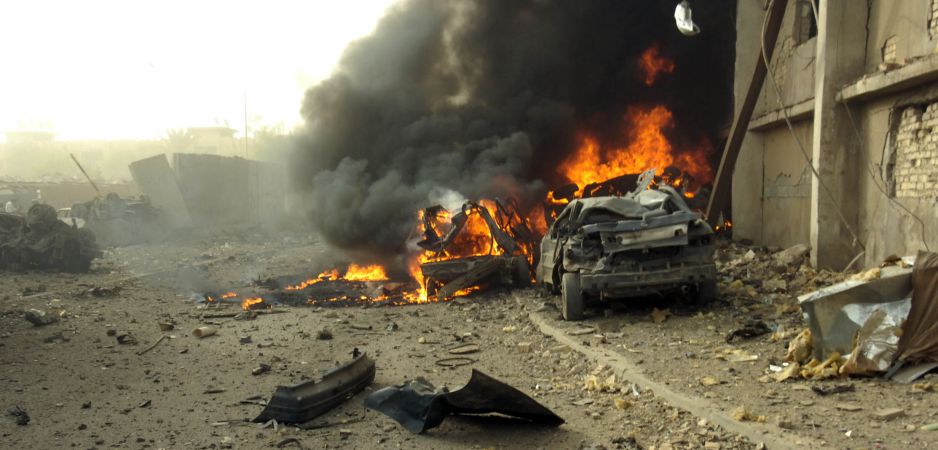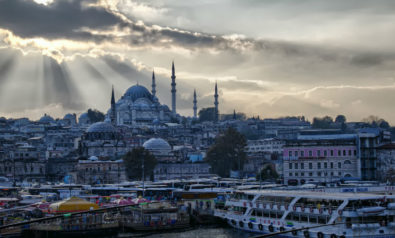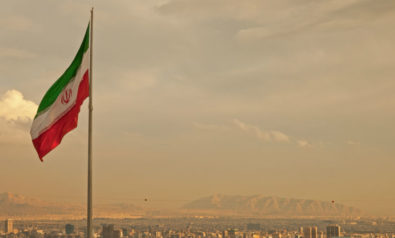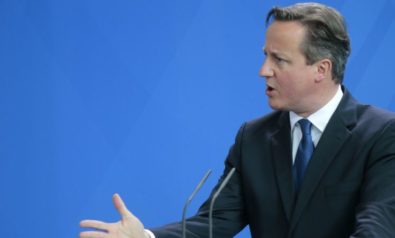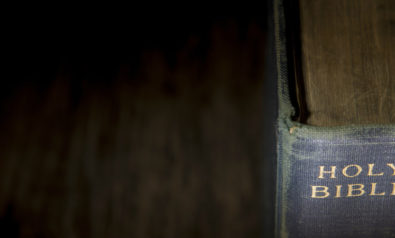What can history teach us about jihadist groups such as the Islamic State?
“No, we must be clear. The root cause of the threat we face is the extremist ideology itself.” British Prime Minister David Cameron’s recent speech in Birmingham represents a direct political intervention in the increasingly urgent debate as to what really lies behind the phenomenon of Islamist violence. Beyond the tiny numbers of Brits who are being sucked in, that violence takes the form of insurgencies and terrorist groups operating from West Africa to the Philippines.
It represents a risky deviation from the standard political line in the United Kingdom that “Islam is a religion of peace,” although it is not actually incompatible with it. Cameron is hoping that the public will be able to grasp the crucial distinction between Islam and Islamism.
In one sense, Islamism is a new phenomenon, a political movement surging into the void left by the rapid retreat of alternative visions of utopian transformation toward the end of the last century. In another sense, Islam has long been deeply implicated in political and violent projects—just as Christianity has for most of its history, or even Buddhism.
Islam emerged as a military force within the lifetime of its founder and then defined an empire that conquered territory at astonishing speed over the next few generations. And when state authority began to falter during the later history of the Muslim world, new military movements inspired by a fresh commitment to Islam or a messianic leader could balloon into the power vacuum.
Islamic State
Religion can create very powerful visions of how the world should be rather than how it unfortunately is. Indeed, before modern times—before the French Revolution produced a new secular vision of radical change—the most revolutionary movements in history often had a millenarian tinge. When such rebellions broke out, however much they fed off hunger or greed, they were inspired by visionaries speaking of the coming dawn of a new age. In our own times, Islamic State (IS) propaganda has begun to prime its followers to look forward to the apocalypse.
It is an easy option here simply to blame Islam. Quite understandably, then, some commentators have pointed out that the overwhelming majority of Muslims are not waging violent jihad but going about their ordinary lives; that nearly all respected Muslim scholars repudiate these movements; that many of the young people rushing off to join IS are ignorant of doctrine or simply intent on leaving a frustrating life back home; and that current strife is the result of poisonous legacies from the colonial period and the Cold War, never mind recent Western interventions. These are all important points to bear in mind in any rounded understanding of the various conflicts.
But can we conclude that these conflicts have nothing to do with religion, but are merely political struggles masquerading as something else?
It can help here to borrow the detached perspective of the historian and consider how we would approach an equivalent conflict in the more distant past. We would look at how each side recruits members and legitimizes their use of violence; what kind of language they use and symbols they brandish; how their enemies are identified; and what kind of society they try to create. To be sure, we rarely have the evidence to look deep into the hearts of people caught up in past struggles or measure their comprehension of doctrine. But even for subjects alive today, it is hardly straightforward to say where sincerity shades into self-interest or the extent to which faith depends on knowledge.
From this viewpoint, the Islamic State seems to have been doing everything possible to fit the bill of a political movement shaped by religion, given that it attacked a defenseless alternative sect—the Yazidis—sheltering on a mountainside, or that it uploads YouTube videos of the faithful destroying ancient Babylonian statues of “pagan gods.”
It might seem odd to disregard what mainstream clerics say about the orthodoxy of extremist movements. But the “mainstream” has remained neither constant, nor uncontested. It is difficult to imagine the pope endorsing crusading movements to retake the Holy Land as his predecessors of the medieval period saw fit to do.
Therefore, this is the first insight which historians can bring to current debates: That there is no single timeless essence of a religion, whether it be Islam, Christianity or Buddhism. They have been interpreted in many different ways over the ages. And from the historian’s birds-eye perspective, nobody gets to say which ones are “authentic” or “real.”
Wars of Religion
The second insight is to understand any development as the result of many different strands of cause and effect lacing together in complex ways. In other words, we habitually look for what John Lewis Gaddis called “interdependent variables” rather than single causes. So just because power-hunger, strategy or sheer derangement are on the table, it doesn’t mean that spiritual fervor, religious solidarity and dreams of heaven and hell are not there too—indeed, they work hand-in-hand. In Britain, viewers of the TV series Wolf Hall have had a history lesson in such subtleties of motivation as they worked through the court of Henry VIII. How seamlessly the intricacies of scriptural interpretation merged with the concerns of the marriage bed and the shifting imperatives of diplomacy.
In fact, the past generation of historians has been more concerned than ever to acknowledge that religion is a cause as real as any other. The dramas of Henry VIII’s court were an early English stirring of the wars of religion that afflicted Europe after the Reformation had torn Christendom apart into competing Catholic and Protestant sects. One of the deadliest manifestations of this was the French Wars of Religion (1562-98). Of course, any historian would be at pains to point out that all manner of power struggles were at work here: At one level, this could even be seen as an extended squabble between two aristocratic factions, the Guises and the Bourbons, taking advantage of a weak crown.
Yet historians now recognize that if we want to properly understand these civil wars—how intractable they were or how much they involved civilian violence—then we must appreciate a religious logic at work. In the St. Bartholomew’s Day massacre of 1572, for example, Protestant and Catholic neighbors turned on each other and their violence took on a ritual quality as if they were not just removing opponents, but scourging their towns of spiritual pollution. This is why the last generation or two of historians has sought to put the “religion” back into the “Wars of Religion.”
In exactly these decades in the Muslim world, a conflict between Sunni and Shiite states was also taking shape, as the Ottoman rulers of the Middle East were forced to confront the rise of the Safavid shahs. The Safavids started out as a messianic Sufi order; then became a military force to be reckoned with in the power vacuum that followed the collapse of the Timurid Empire; and then as emperors set about establishing Shiism as the official religion of Iran for the first time.
It is worth noting that as rulers of a vast multicultural empire, the Ottomans were still significantly more tolerant in religious matters than their European neighbors to the west who could be found ejecting their Jews, persecuting heretics, burning witches and slaying each other over different interpretations of the Bible. The Ottomans, by contrast, took in Europe’s Jews and allowed them to live under their protection, along with Orthodox Christians and others. But on their eastern frontier, as the Safavids threatened their claims to pre-eminent Islamic authority, the Ottoman state also turned to the language of sectarian rivalry. Thus, it encouraged a form of Sunni-Shiite antagonism that we see parallels with today.
Power of Islamism
To return then to present afflictions, recognizing that religious ideology has its own power does not mean automatically identifying it as “the root cause” of any one act of violence, and it certainly does not mean endorsing the PREVENT strategy or Prime Minister Cameron’s proposals as to how to respond to it. There are obvious dangers, for example, in seeking to police non-violent ideas because one assumes they may encourage violent ones. But critics should resist the temptation to insist that sacred ideas and identities simply do not matter in modern conflicts. From a historical perspective, the recourse to a sort of brute materialism in explaining complex political phenomena is bewildering.
When reflecting on past contexts more removed from the heat of contemporary debate, nearly all of us (whether on the right or left) would be willing to acknowledge the force of ideology. Who could look back on the history of the 20th century and make sense of it without reference to the power wielded by thought itself—whether in the form of nationalism, Darwinism, racism, fascism, communism or neo-liberalism? All of these came to life tightly bound into basic political impulses and strategies, and yet they shaped the political arena no less deeply in turn. And in future generations, who would try to write the history of the early 21st century without reference to the world-changing ideological power of Islamism?
The views expressed in this article are the author’s own and do not necessarily reflect Fair Observer’s editorial policy.
Photo Credit: Wikifreund / Eusebius
 We bring you perspectives from around the world. Help us to inform and educate. Your donation is tax-deductible. Join over 400 people to become a donor or you could choose to be a sponsor.
We bring you perspectives from around the world. Help us to inform and educate. Your donation is tax-deductible. Join over 400 people to become a donor or you could choose to be a sponsor.
Support Fair Observer
We rely on your support for our independence, diversity and quality.
For more than 10 years, Fair Observer has been free, fair and independent. No billionaire owns us, no advertisers control us. We are a reader-supported nonprofit. Unlike many other publications, we keep our content free for readers regardless of where they live or whether they can afford to pay. We have no paywalls and no ads.
In the post-truth era of fake news, echo chambers and filter bubbles, we publish a plurality of perspectives from around the world. Anyone can publish with us, but everyone goes through a rigorous editorial process. So, you get fact-checked, well-reasoned content instead of noise.
We publish 2,500+ voices from 90+ countries. We also conduct education and training programs
on subjects ranging from digital media and journalism to writing and critical thinking. This
doesn’t come cheap. Servers, editors, trainers and web developers cost
money.
Please consider supporting us on a regular basis as a recurring donor or a
sustaining member.
Will you support FO’s journalism?
We rely on your support for our independence, diversity and quality.


